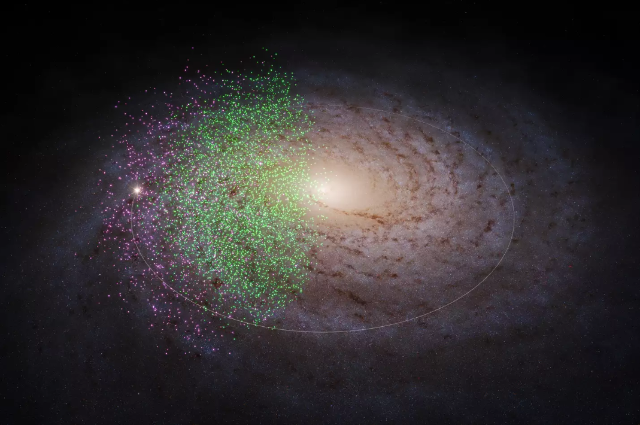A Germany-based world's leading astronomy institute, Max Planck Institute for Astronomy have identified two of the Milky Way's primary foundational blocks and named them 'Shakti' and 'Shiva'.
It seems to be the remnants of two galaxies that merged between 12 and 13 billion years ago, thus, giving way to the initial versions of Milky Way which later led to the growth of our initial galaxy. The new find is being paralleled with the discovery of the collapse of a civilization that once existed and has now transformed into a large and big city.
Khyati Malhan and Hans-Walter Rix of the Max Planck Institute for Astronomy were the ones who succeeded in identifying the two earliest building blocks that are being referred to as 'proto-galatic fragments' that merged leading to the creation of an era of galaxy formation in the universe. The comments were identified by combining data from the European Space Agency's astrometry satellite Gaia with data from the Sloan Digital Sky. Gaia, launched in 2013, is assembling the largest and the most precise 3D map of the Milky Way, measuring the positions, distance and motions of stars. This data led the researchers to detect the presence of Shiva and Shakti through properties shared by their stars.
The Big Bang event that led to the beginning of the galaxy occurred about 13.8 billion years ago. The infant Milky Way was supposed to have an irregular fit with stars, dust and gas coalescing together.
The Gaia data identified what they called the 'poor old heart' of the Milky Way, a population of stars that almost dated a time frame that somewhere coincides with the earliest history of the galaxy.
They are also called 'metal poor' because they possess lesser amounts of heavier elements. These heavier elements were first forged inside the universe's earliest population of stars and then blasted into space when those stars exploded at the end of their life cycle.
Right now, we only possess only a broad understanding of the Milky Way's formation and more surveys in future will shed more light on this.
Shiva and Shakti are now situated within approximately 30,000 light-years of the galactic centre. Shiva's stars are a bit closer to this centre than Shakti's stars.
Researcher Malhan has named these two structures, Shiva and Shakti, the former being one of the principal deities of Hinduism and the latter, a female cosmic force who is often portrayed as Shiva's consort. They observed that stars were crowded around two specific combinations of energy and angular momentum. It is being expected that Shakti and Shiva might be the first two additions to the 'poor old heart' of our Milky Way, initiating a growth towards a large galaxy. All these conditions surmise that Shiva and Shakti to be good candidates or to be some of the earliest ancestors of our Milky Way.
Shakti and Shiva are comprised of stars with similar chemical compositions that formed 12-13 billion years ago. Each of the structures has a mass about 10 million greater than our Sun.
The Milky Way is a large spiral-shaped galaxy that locates hundreds of billions of stars whose disk measures approximately 1,00,000 light years in diameter. A light year is the distance light travels in a year, 5.9 trillion miles. Stars, gas and dust extend from the galactic centre in lengthy spiralling armed with our Sun residing on one of those.
. . .
References:
- timesofindia.indiatimes.com
- thehindubusinessline.com
- mpg.de
- iopscience.iop.org (The Astrophysical Journal)

